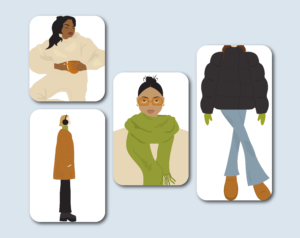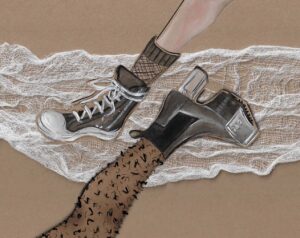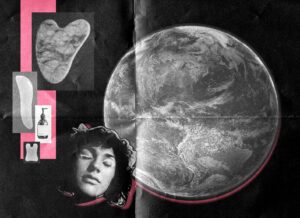In our latest instalment in the Industry Profile, we went backstage at Toronto Men’s Fashion Week (TOM*) S/S’18 to get the scoop on Finezza designer Ivan Lehec’s take on inspiration, industry trends and the challenges designers face. Something we encountered frequently throughout TOM* and its sister event TWFW (Toronto Women’s Fashion Week) was a lack of designer interest in talking about the bigger issues that currently perplex the Canadian fashion marketplace. Whether it’s a lack of diversity, lack of government funding for fashion, the challenges facing young designers, or the mass migration of promising design talent to other countries, there are serious issues within Canada’s fashion landscape that need to be addressed. But for some reason designers don’t always want to talk about it, and this is what’s holding us back.
For designer’s like Lehec who championed diversity in his SS’18 runway show at TOM*, demonstrating both racial and age diversity, we were surprised that he didn’t take the opportunity to dive into that decision-making process more. Evidently diversity was a major theme at this year’s TOM* and TWFW shows but showing is only one part of the solution; having a dialogue about why representation is important is just as key in furthering progress as action.
In these interviews, StyleCircle attempts to push dialogue forward, inspire critical thought and get the *real* deal on the industry’s current status. Find our previous Industry Profiles here and here.
1) What was the influence and purpose behind this collection?
“The inspiration behind this collection is the trip we did this summer. We went to Italy. All the colours, the sea, the houses – so those were the inspiration. The purpose was to bring more clothing you can be chic and comfortable in.”
2) Your collections in the past showcased more tailored menswear, was it hard to change your aesthetic and show a more casual collection?
“It’s interesting because our idea is to have an elegant look, but we think it’s important to see what’s going on actually in the street. When you go to Toronto, Montréal, Italy, people—the younger, the older, can wear track pants, t-shirt, jacket so we try to have some newer looks like that.”
3) Seeing a range of ages on the runway was very refreshing. Why did you make this choice?
“That’s what fashion is all about. We want to please everyone.”
4) What’s the biggest difference between the fashion scene in Montréal versus Toronto?
“There’s definitely one, because I’ve been outside of Montréal for many years now, every time I go back there, people are super fashionable in Montréal. You know the expression, “you wear the heart on the sleeve”, they wear their fashion on their body. They don’t care, they like to experiment, and they like being grungy, they like being different. And I think it trickles down to here and, I feel like people are starting because it’s so multicultural and now we’re not afraid to borrow from all these cultures and I think that our collections — especially the one showed today really reflect that. Like, you look at the colours and you can really identify some colours of certain cultural groups. Which is very nice, it really shows the ethnicity and it creates a huge impact and appeals to the masses too.”
5) Is there anything you see as challenges in the fashion industry and that you strive to do better in?
“There are so many styles, and I love everything. It’s hard to stick to one. And right now we’re trying to see the reaction but to also stay focused. We are on the same road, but we’ve tried some different things.”
Yanic Simard: “What I like about them, is that they really borrow form the past. Because there’s a lot of old-fashion and they use it to create the present, the reality where we live in, while building for the future. So it’s really nice to see the collection evolving.”
6) You clearly have a great team here. Has your family influenced the collection in any way?
“Yes, of course they do. The comfort comes from there and the brand is all about comfort.”
7) What’s your advice to emerging fashion designers?
“Don’t give up. Be who you are. Be patient and put in hard work. It’s not easy.”
8) What big lessons have you learned from working in the fashion industry?
“Humility. You’ve got to be wrong when you design and you have to not be afraid to make mistakes. You mend and change sometimes. The humility will give you the ability to do that, to adapt.”
9) Do you think men are becoming more eager to express themselves through fashion?
“The time of the black, and navy blue wardrobes is gone. Now men are more open to express themselves. Especially with special events like TOM*, it really pushes and promotes men’s fashion which is really important. If you don’t put it in your face, the guys won’t know about it. So this is a very good event for making men’s fashion front and centre.”
Interview by Joanna Lupker with Ivan Lehec and his team. Responses from all three individuals were condensed and compiled for readability.
Images in the feature graphic are courtesy of Ian Woo and Che Rosales; graphic created by Luke Severin.


























